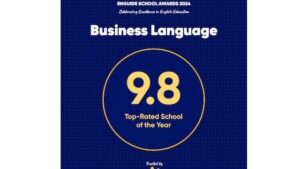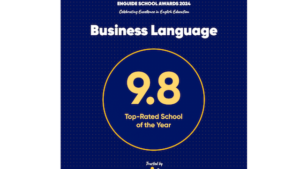
On Thursday and Friday, November 27 and 28, 2025, all customers can refuel their cars at the gas stations of Ukraine’s largest network, UKRNAFTA, at the most favorable price.
Base prices for these two days have already been reduced:
• A92 — 55.99 UAH/l;
• A95 — 55.99 UAH/l;
• A95 Energy — 55.99 UAH/l;
• A98 Energy — 66.99 UAH/l;
• DP — 57.99 UAH/l;
• DP Energy — 58.99 UAH/l;
• LPG — 33.99 UAH/l.
When purchasing fuel through the UKRNAFTA app wallet, the following additional discounts apply:
• −2.5 UAH/l when purchasing gasoline and diesel fuel;
• −0.5 UAH/l on LPG.
You can also refuel with gasoline and get -10 UAH/l:
• −2 UAH/l — when using the UKRNAFTA app;
• −1 UAH/l — when refueling 20 l or more and purchasing winter washer fluid;
• −1 UAH/l — when refueling 20 l or more and purchasing a hot dog;
• −2 UAH/l — when refueling 40 l or more (25–40 l: −1 UAH/l)
• −2 UAH/l — when paying with a Mastercard from OTP Bank;
• −2 UAH/l — additional bonuses from partners: Nova Poshta, YasnoLove, Vodafone.
That is, if a UKRNAFTA customer fills up with 40 liters of gasoline, enjoys a hot dog, purchases a high-quality winter windshield washer fluid, collects a partner bonus, scans the app, and pays with a Mastercard from OTP Bank, they will receive a discount of 10 UAH/liter.
We invite everyone to UKRNAFTA — the most affordable gas station chain near you!
JSC Ukrnafta is Ukraine’s largest oil production company and the operator of the largest national gas station chain, UKRNAFTA. In 2024, the company entered into asset management with Glusco. In 2025, it completed an agreement with Shell Overseas Investments BV to purchase the Shell network in Ukraine. In total, it operates 662 gas stations.
The company is implementing a comprehensive program to restore operations and update the format of its network of gas stations. Since February 2023, it has been issuing its own fuel vouchers and NAFTAKarta cards, which are sold to legal entities and individuals through Ukrnafta-Postach LLC.
The largest shareholder of Ukrnafta is Naftogaz of Ukraine with a 50%+1 share.
In November 2022, the Supreme Commander-in-Chief of the Armed Forces of Ukraine decided to transfer to the state the corporate rights of the company that belonged to private owners, which is now managed by the Ministry of Defense.

In the context of the ongoing conflict in Ukraine, immigration flows to the United States have taken on particular significance. Since 2022, the US has introduced a number of special programs to support displaced Ukrainians, including temporary protection and humanitarian parole. By November 2025, these initiatives had undergone significant changes due to political shifts, court decisions, and administrative adjustments. Analysis shows that the total number of Ukrainians who received protection in the US exceeded 170,000 through the Uniting for Ukraine (U4U) program, while Temporary Protected Status (TPS) covered about 1.3 million people from various countries, including Ukraine. However, in 2025, many programs faced pauses, restrictions, and even termination, reflecting a more restrictive immigration policy. In this article, we will examine the key immigration mechanisms, their evolution, statistics, and potential challenges for Ukrainians, based on official data and trends. We will pay particular attention to how consulting with an immigration lawyer in the US can help navigate these changes.
Temporary Protected Status is one of the key humanitarian protection tools in the US immigration system. For Ukraine, TPS was introduced in 2022 in response to the military invasion and has been extended several times. As of early 2025, the status has been extended until October 19, 2026, with a re-registration period from January 17 to March 18, 2025. This allowed Ukrainians who had been continuously residing in the US since August 16, 2023, to remain in the country, work, and receive basic benefits such as employment authorization (EAD), automatically extended until April 19, 2026.
An analysis of the evolution of TPS for Ukraine reveals a dependence on the political context. In January 2025, the Department of Homeland Security (DHS) announced an 18-month extension, starting on April 20, 2025. However, by November 2025, the situation had changed dramatically: on November 5, DHS Secretary Kirstjen Nielsen published a notice terminating TPS for Ukraine, effective November 8, 2025. This decision reflects a broader trend toward reducing humanitarian programs. Statistics show that by March 2025, TPS covered approximately 1.3 million people globally, with a significant proportion of Ukrainians. Compared to other countries, such as Sudan (extended until October 2026) or Syria (until November 2025), Ukrainian TPS had a longer horizon, but its termination now creates uncertainty.
A critical aspect is the limitations of TPS: it does not lead to a green card and is subject to annual assessments of conditions in the country of origin. In 2025, court decisions, including Supreme Court rulings, influenced renewals by requiring DHS to consider humanitarian factors. For Ukrainians, this meant stability in the short term, but with the termination in November 2025, many are forced to seek alternatives, such as asylum or visas. In such cases, an immigration lawyer in the US plays a key role in evaluating individual options and preparing applications.
Uniting for Ukraine, launched in April 2022, became the primary channel for humanitarian parole for Ukrainians. The program allowed Ukrainian citizens and their families to obtain a two-year parole with the right to work, provided they had a sponsor in the US. By December 2023, more than 170,000 Ukrainians had arrived through U4U. However, in 2025, the program experienced a turbulent period.
On January 28, 2025, USCIS suspended the acceptance of new U4U applications, causing significant delays. This decision was part of a broader pause on humanitarian programs, including similar ones for Afghans and Central Americans. In May 2025, a court ruling on May 28 required the government to resume processing pending applications, and by June-August, USCIS had resumed the renewal process through Form I-131, including re-parole. However, new applications remain frozen, although the program has not been completely terminated, and the focus is on those already in the United States.
Analytically, U4U reflects the flexibility of US immigration policy: the program was effective in 2022-2024, but in 2025 it faced administrative barriers. UNHCR statistics indicate that 12.7 million Ukrainians will need assistance in 2025, of whom only a small proportion can rely on U4U. In September 2025, Ukrainians on parole faced the loss of their right to work in some cases, which increased uncertainty. Compared to other programs, U4U has stricter requirements for sponsors, which reduces its accessibility compared to TPS.
Asylum applications remain an important route for Ukrainians seeking permanent protection. Statistics show growth in 2025: in fiscal year 2024, the US accepted thousands of Ukrainian refugees, with a total cap of 125,000 for 2025 globally. The overall asylum approval rate in the US varies by state, with higher rates in California and New York, reaching 50-70% for Ukrainians depending on the court. For Ukrainians, asylum is justified by persecution due to the war, with an emphasis on individual cases.
Changes in 2025 include stricter procedures: the administration has introduced restrictions on asylum for those who cross the border irregularly. UNHCR data for August 2025 highlights the risks for displaced Ukrainians, with a focus on protection. In fiscal year 2025, it is proposed to accept up to 125,000 refugees globally, with a share for Eastern Europe. Trend analysis shows that asylum for Ukrainians has a high approval rate, but the process takes years, making it less attractive compared to TPS. Here, an immigration lawyer in the US can provide expertise on gathering evidence and presenting it in court.
Family immigration provides Ukrainians with pathways through petitions from relatives in the US. Permanent residents can apply for spouses, minor children, or adult descendants. In 2025, with the termination of TPS and pauses in U4U, many Ukrainians are using this to transition to a green card. However, the process is lengthy: for adult children, the wait can be years.
Statistics show that in 2023-2025, a significant proportion of Ukrainians relied on family ties for integration. For Ukrainians on TPS or U4U, this is an option if their status expires in 2026. Analysis reveals barriers: visa quotas and bureaucracy slow down the process, especially in the post-conflict period.
Work immigration for Ukrainians includes H-1B, O-1, and EB-2 visas. In 2025, the focus is on skilled professionals: Ukrainian founders can apply for EB-2 NIW or O-1 through startups. TPS and U4U allow you to work, but long-term options require employer sponsors.
Changes in 2025 include program pauses affecting transitions. Statistics highlight the diversity of Ukrainians’ statuses in the US. Analysis shows growth in the IT and logistics sectors, but competition with global applicants.
In addition to TPS and U4U, there are programs such as the Diversity Visa Lottery for 2027, which opens in the fall of 2025. In 2025, pauses in U4U affected the overall humanitarian landscape. UNHCR and other organizations continue to provide support, with 12.7 million people in need.
In conclusion, the immigration outlook for Ukrainians in the US in November 2025 combines the remnants of stability from U4U with uncertainty following the termination of TPS and asylum. Political changes, such as the indefinite refugee ban, increase the risks. Trend analysis suggests the need to diversify options, from family to work visas, for long-term integration. Overall assistance remains significant but requires monitoring of DHS and USCIS updates.

We are used to thinking that learning is a young person’s game. That after 30, the brain begins to “grow moss,” and new English words are harder to remember than Wi-Fi passwords. But the truth is quite different: adults not only can learn — they often do so more effectively than students. And if you’ve ever studied as an adult, you know there’s a certain magic to it.
This article is about how our brains work in adulthood, why the phrase “I’m too old to learn” is just a myth, and how to use adult advantages to learn languages, professional skills, or any new area of life.
This is not true; adults simply remember differently.
Memory is not a closet that you fill up over time and then nothing else fits. It is more like an old house where new things have to be placed logically in familiar rooms.
Adults have developed associative connections: we understand more quickly where new information belongs and how to apply it. For example, if you are an accountant and start learning English, you will remember the words budget, invoice, and revenue much faster than a teenager who has never seen real documents in their life.
Practical case:
Oksana, 42, a marketing manager, complained at the beginning of her English course that “everything is forgotten.” The teacher replaced traditional dictionaries with examples from her work: brand awareness, target audience, customer journey. After three weeks, she began to insert English terms into her reports herself. Her brain simply understood why these words were needed.
So the secret is not in age, but in context. The adult brain does not like useless information, but if it sees practical use, it memorizes it with amazing speed.
The brain doesn’t age — it restructures.
In mature age, the number of new neurons decreases, but the connections between the old ones are strengthened. It’s like having fewer new roads but more reliable routes. Therefore, an adult is able to quickly integrate new knowledge into the existing system.
Studies show that people over 40 are better at learning complex concepts because they rely on experience rather than memorization. Therefore, they often learn not “mechanically” but with an understanding of the logic.
A case study from English courses:
Igor, 48, an IT specialist, began studying English in order to switch to working with foreign clients. At first, he was afraid that it was “too late.” But after only 5 months, he began reading technical forums in English. As he himself admitted: “I don’t study, I understand how it works.” His logical thinking allowed him to create a structure in which new knowledge could be stored.
Adults learn well when they see a system. And if a course or teacher helps to build this system, the speed of knowledge acquisition grows exponentially.
The truth is that adults are not worse, they just have higher expectations of themselves.
A child does not think, “Did I say it right?” They just repeat. Adults analyze, compare, and are afraid of making mistakes.
Once this barrier is removed, adults speak beautifully. Muscle memory can be formed at any age — all it takes is regularity and a lack of fear of sounding strange.
Case study:
Mykhailo, 36, a doctor, put off lessons for years because his “pronunciation was terrible.” But after a few lessons with a teacher who turned practice into a game (imitate the accent, play the role, exaggerate!), Mikhail began to reproduce British intonations so well that his colleagues asked him to repeat. His “terrible pronunciation” turned into a stage power.
Pronunciation is not a question of age, but of emotional freedom.
Yes, adults have jobs, families, deadlines, loans, and dogs that won’t let them go on vacation. But that’s what makes them more effective learners.
Adults don’t have time to “sit over a book,” so they look for ways to learn smarter, not longer. They plan better, know their weaknesses, and can make decisions: “I need this, but not that.”
Case study:
Marina, 33, HR director, had only 20 minutes a day for homework. She used English-language podcasts on her way to work and short online sessions once a week. In six months, she passed the IELTS with a score of 6.5. Not because she had time, but because she worked strategically.
An adult approach to learning is not slowness, but efficiency.
This myth is particularly stubborn. We were taught that children absorb everything like a sponge. But a sponge absorbs indiscriminately, while an adult absorbs consciously.
Children do copy sounds quickly, but they don’t always understand the meaning. Adults may learn less, but with an understanding of structure, logic, and context, which leads to much deeper assimilation.
Case study:
Oleg, 55, a company owner, decided to brush up on his English because his clients had become international. He started from scratch, even though he thought it was “too late.” A year later, he spoke at a conference in Poland in English. As he said himself, “I didn’t learn the language, I built bridges between what I already knew and what I didn’t know yet.”
Adults are not “slow learners”; they are engineers of their own knowledge.
Now that we’ve established that age is not a sentence for the brain, let’s talk about how to learn smart.
There is another surprising thing: for many adults, learning becomes a way to regain a sense of youth.
During learning, the brain creates new connections — a process that literally rejuvenates. People who continue to learn after 40 have a lower risk of cognitive decline, better concentration, and even a better mood.
What’s more, in adulthood, learning often becomes a form of psychological support. When a person sees that they can master something new — even a language or an instrument — their self-esteem grows and they gain confidence: “I can still do it.”
We live in a time when learning is not about age, but about flexibility. People change careers after 40, launch startups after 50, and start learning a language at 60 — not for work, but simply for the joy of it.
Our English courses often see amazing stories:
— A 57-year-old woman who learned English to communicate with her granddaughter in Canada.
— A 61-year-old man who came to class because he dreamed of traveling without an interpreter.
— A mother of three who studied Business English to develop her own brand.
And in each case, the motivation is not to “be better,” but to live more fully.
Children learn because “they have to.” Students learn because “they have to pass.” Adults learn because they chose to. And that’s what makes their path stable.
Adult learners rarely quit studying because they are tired. They may take a break, but they come back. Because they know that they are doing it not for a grade, but for themselves. And that is a huge advantage.
When a person learns consciously, the process becomes not only productive, but also deeply human.
Adults learn faster than they think because:
● they have experience that helps structure knowledge;
● they are able to set goals and evaluate progress;
● they know how to learn meaningfully, through context;
● they are not afraid of responsibility — they just do it.
The brain does not “age,” it adapts. And the more we train it, the better it works.
When someone tells you, “Learning is no longer for you,” smile. Because every new word, skill, or discovery is proof that your brain is alive, growing, and creating the future, regardless of your year of birth.
Learning after 30, 40, or 60 is not about age. It’s about dignity, courage, and curiosity about life. And if that curiosity is there, the brain will always find a way.

Presentations, negotiations, correspondence – practical cases for a professional context
In today’s world, where every email, meeting, or presentation can open or close the door to partnership, English language skills are turning from a formality to a competitive advantage. Business English is not just a vocabulary of “meeting”, ‘deadline’ and “profit”. It is a language of confidence, clarity, and professional style.
Today we will analyze three situations where English really works: presentations, negotiations, and business correspondence. And we’ll use real-life cases to illustrate them, without boring theory.
You can know all the words in the world, but if you speak without structure, the audience will lose attention in the second minute.
Case study:
Olena, the marketing director of a Ukrainian company, was preparing a presentation for investors from London. She had translated the text of the slides into English, but the presentation sounded mechanical. During a test lesson, the teacher noticed that the problem was not in grammar, but in presentation.
Which helped:
She replaced formal expressions such as “I will present our marketing strategy ” with more lively ones:
● “ Let me walk you through our growth story.”
● “ Here’s what made the difference for our customers.”
I added logical connections – “First, let’s take a look…”, “This brings us to the next point...”, “To wrap up…”.
And suddenly, everything started to play – my voice became more confident, the audience did not look away.
Tip: Before a presentation, always read the text out loud, like a conversation, not a report. English for business is not a theater, but a dialog.
When we say “negotiations in English,” many people immediately sweat. Not because of the language, but because of the fear of “saying the wrong thing.” And here the main thing is to learn to speak diplomatically but clearly.
Case study:
Andriy, the head of the IT team, was discussing a contract with German partners. His phrase “We don’t agree with your terms ” gave the impression of a categorical refusal. After a short consultation with his business English teacher, he changed his approach.
Now he said:
● “We’re not fully aligned on this point yet – could we explore some alternatives?”
● or “We’d prefer a slightly different approach.”
And that was it – the negotiations became constructive, the tone softer, and the deal closer.
The lesson from this case is that in business English, it’s not just what you say, but how you say it. The choice of a single word can determine whether you come across as a confident partner or an impolite opponent.
Email is your business card in the business world. Sometimes it is the letter that decides whether your proposal will be read or postponed “for later”.
Case study:
Maria, an HR specialist, sent emails to candidates after interviews. Her texts were too formal:
“We would like to inform you that your application has been approved.”
After a few lessons, she learned to adapt her style to the modern business context:
“We’re happy to let you know that we’d love to move forward with your application!”
Less formality means more humanity. And this is what creates a sense of professionalism in the modern business world.
The golden rule: write as if you were communicating in person. Even a short email can sound warmer with little things:
● “ Thanks for getting back to me so quickly.”
● “ Hope your week is going well!”
● “ Looking forward to hearing your thoughts.”
Business English is not a set of patterns, but a sense of style. When you speak English naturally, your partners do not feel like a “foreigner trying to do his best” but a professional who speaks the international language of business.
Success in this is not about perfect grammar, but about your tone – confident, friendly, clear. This is what makes a language “working”.
To prevent English from being “switched on” only at meetings, you need to weave it into your daily routine:
● Listen to podcasts about business in English (for example, “The English We Speak” by BBC Learning English);
watch short videos on YouTube about negotiations – but pay attention not only to the words, but also to the tone of voice;
● keep a “mini diary” with working phrases in English – even 3 sentences a day will make progress.
When you start thinking in English in a business context, translation becomes redundant. You don’t translate anymore: “We don’t agree” → “We disagree”, but immediately feel the nuance:
● “We’ re not on the same page yet. ”
● “ That won’t work for us. ” – firmly but politely;
● “ Let’s revisit this later. ” – diplomatically.
This is how language becomes a tool of influence, not just a skill for a resume.
Business English is not about “speaking correctly”. It’s about sounding professional, thinking strategically, and being yourself.
It works when you are not afraid to be a real person: to smile during a presentation, to clarify with respect, to ask again if you are not sure, or to write briefly and sincerely instead of using clerical templates.
After all, in the 21st century, business is built not only on products or deals, but on clear, friendly communication.
And if your English helps to build trust, it is English that really works.
Prepared by the Corporate English Department “Business Language”

Where is the greatest potential for reducing carbon dioxide emissions, and which construction technologies can maximise the energy efficiency of buildings?
The construction and operation of buildings accounts for 39% of global CO2 emissions, of which 28% comes from operational emissions and the energy required for heating, cooling, and power supply, and 11% comes from the manufacture of materials and construction.
In the EU, only 25% of buildings are considered energy efficient, while in Ukraine the share of such buildings is about 5%. Consequently, the greatest potential for reducing carbon emissions lies in improving the energy efficiency of buildings and reducing the use of fossil fuels in the manufacture of building materials.
The use of energy-efficient building envelopes in combination with technologies such as heat pumps, renewable heat and electricity sources is the best way to create energy-independent buildings and achieve climate neutrality.
Rauta offers energy-efficient technologies using Ruukki products to create energy-efficient buildings.
Thanks to the special configuration of the joints and the presence of an EPDM seal in the sandwich panel locks, maximum airtightness of q50≤1 m3/(m2h) is achieved and energy consumption is reduced by up to 20% compared to conventional panels.
Highly efficient building envelopes made of Ruukki sandwich panels not only reduce overall carbon dioxide emissions and operating costs, but also provide greater comfort for people, enhance the company’s image, and increase the value of the building.
The use of Ruukki’s energy-efficient sandwich panels with special accessories and additional joint sealing can reduce a building’s energy consumption by up to 30%.
Green steel products
In 2023, Ruukki became the first company in the world to start producing sandwich panels and ventilated facade cladding from green steel, which is produced using hydrogen, electricity, and biogas instead of fossil fuels. The residual product of this production process is water, not carbon dioxide.
For facades and roofs that will be used in highly aggressive environments, Ruukki offers special Hiarc and Pural coatings, which provide excellent resistance to ultraviolet radiation, have increased resistance to dirt and scratches, and are also capable of reducing the heating temperature of the surface of enclosing structures.
Under the same conditions, energy-reflective coatings heat up 23% less than conventional coatings. This further reduces the amount of energy required to heat or cool rooms.
Rauta’s solution is a rooftop solar power plant that includes an enclosure made of Ruukki roof sandwich panels and modern monocrystalline solar panels with a set of special mounts.
Currently, the return on investment in RoofSolar for commercial buildings is 3.5-4 years.
Today, construction expertise is measured not in tons of concrete and steel, but in how little the construction and operation of buildings affect the environment. Improving construction technologies and using more energy-efficient materials and structures are essential steps for developers to take to preserve the planet.

Mastercard, together with PUMB, is launching an exciting promotion for everyone making international transfers. It’s simple: send or receive money to a Mastercard card via the PUMB app and automatically enter the draw for valuable prizes!
The “Gifts for International Transfers with Mastercard” promotion runs for two months: from April to May 2025.
PUMB clients who own a Mastercard and make or receive international transfers through the bank’s mobile app.
Sending via the PUMB app with a Mastercard:
Receiving via the PUMB app to a Mastercard:
Every month, 30 electronic gift certificates from giftmall worth 2,000 UAH each will be raffled.
– The more transfers you make, the higher your chances of winning!
A total of 60 winners will receive a notification on their mobile phone with details on how to use their certificate.
Send and receive international transfers to Mastercard cards via PUMB, enjoy convenient services, and get rewarding bonuses!
Details and official rules here.